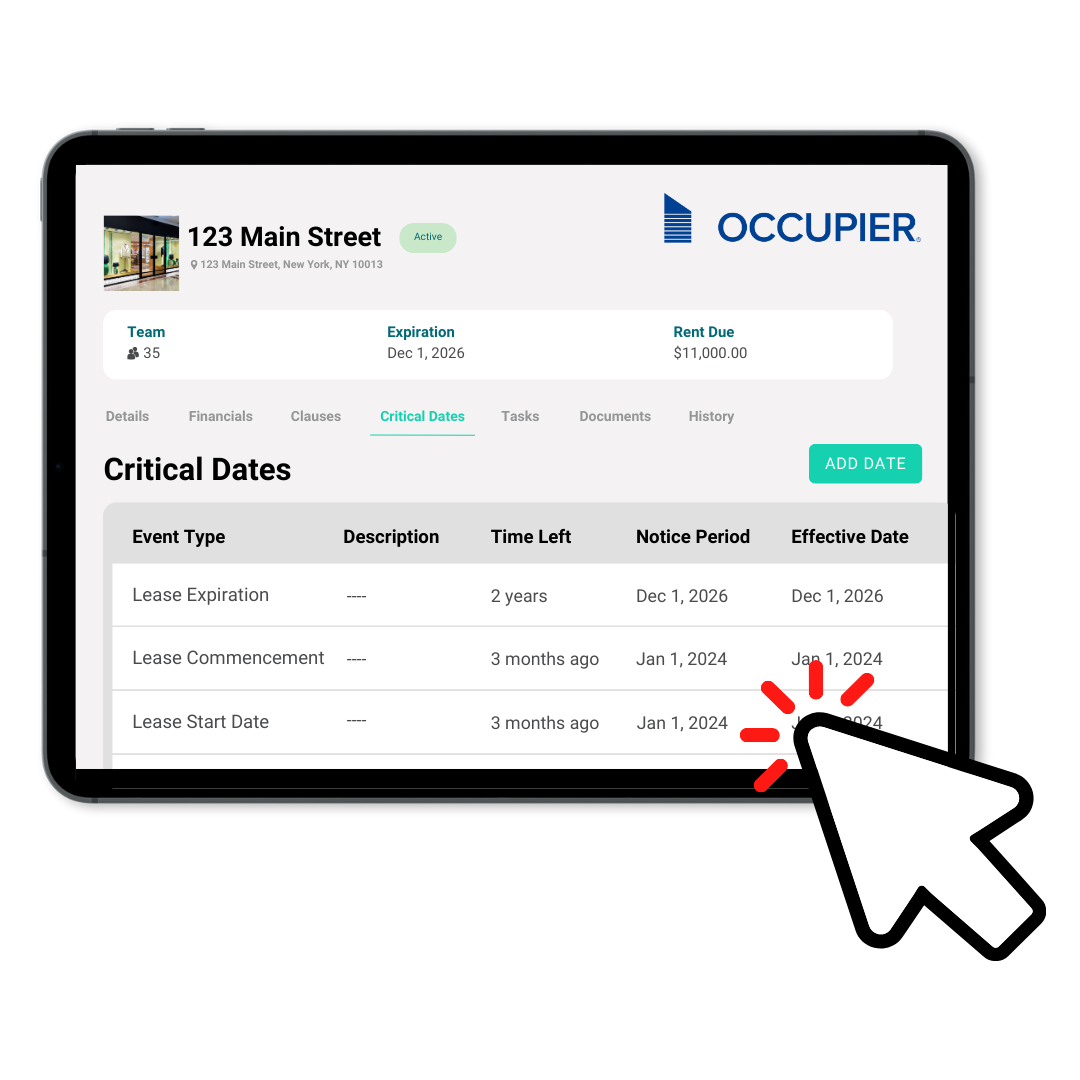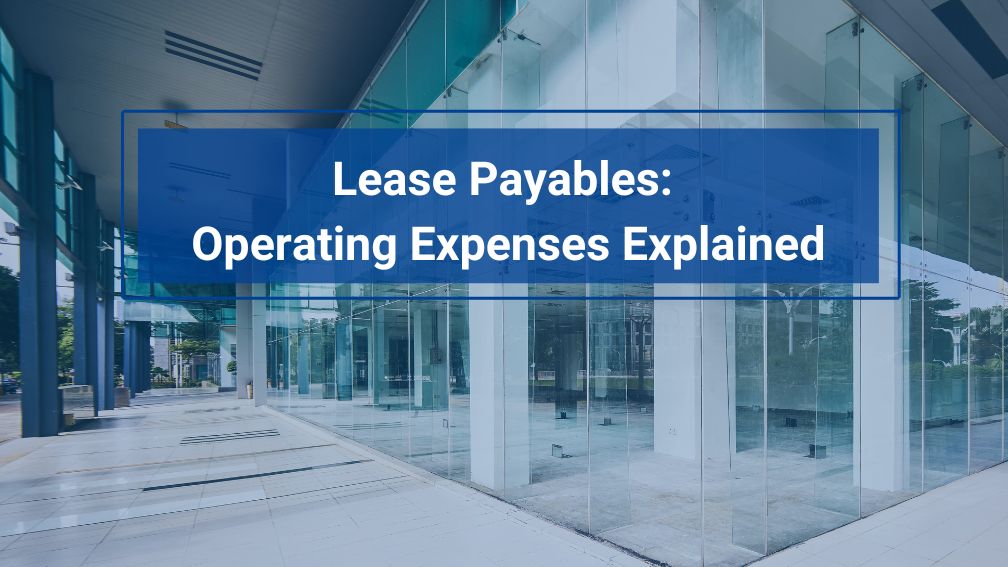Lease Payables: Operating Expenses Explained
Last Updated on July 12, 2024 by Morgan Beard
Operating expenses are the costs associated with operating and maintaining commercial properties, across space types These expenses can include utilities, property taxes, insurance, maintenance and repairs, management fees, and range depending on whether you occupy an office, retail or industrial space etc.
In this blog post, we will delve into the nuances of operating expenses and how they can impact lease payables.
What are Lease Payables?
Lease payables refer to the financial obligations that a tenant incurs under the terms of a lease agreement. These obligations typically include:
- Base Rent: The regular, fixed amount that the tenant agrees to pay to the landlord for the use of the leased space.
- Percentage Rent: An additional rent that is sometimes based on a percentage of the tenant’s sales revenue, often applicable in retail leases.
- Operating Expenses: These are variable costs associated with the operation and maintenance of the leased property. They can include:
- Additional Charges: Any other charges specified in the lease agreement, such as common area maintenance (CAM) fees, marketing fees in shopping centers, or contributions to reserve funds for major repairs.
Breaking Down Operating Expenses
Operating expenses can differ significantly based on the type and size of the commercial property. For instance, a small retail store will have different operating costs compared to a large office building or a warehouse. These costs include things like property taxes, insurance, maintenance, and utilities.
It’s crucial for both property owners and tenants to clearly understand what makes up these operating expenses. Knowing the details can help avoid surprises and ensure that both parties budget appropriately. By understanding each component, like property management fees or repair costs, everyone involved can plan better and keep financials in check.
- Utilities: This covers the costs of essential services like electricity, water, gas, and other utilities needed to run the property.
- Property Taxes: These are taxes imposed by the local government based on the property’s value. Property taxes are a significant part of operating expenses and must be accounted for in the budget.
- Insurance: Commercial properties need various types of insurance coverage.
- Property Insurance: Protects against damage to the building.
- Liability Insurance: Covers legal claims from injuries or damages occurring on the property.
- Worker’s Compensation Insurance: Provides benefits to employees injured on the job.
- Maintenance: Tasks like landscaping, cleaning, and painting or fixing or replacing HVAC systems, plumbing, roofing, and other critical components.
- Common Area Expenses: Many commercial properties have shared spaces like lobbies, elevators, and parking lots. The costs to maintain these areas, including cleaning, lighting, and security, are included in operating expenses.
How Operating Expenses Affect Lease Payables
Lease payables are the amounts owed by the tenant to the landlord for the leased commercial space. These payments cover not only the base rent but also additional expenses associated with the property’s operation.
In most commercial lease agreements, tenants are required to pay their share of the operating expenses as part of their lease payments. This additional payment is usually referred to as “Common Area Maintenance” or “CAM” charges. The exact calculation of these charges is typically outlined in the lease agreement and may be based on a variety of factors, such as square footage or the tenant’s proportionate share of the property.
Operating expenses directly affect lease payables in the following ways:
- Rent Adjustments: When operating expenses increase, the tenant’s share of operating expenses, and consequently their lease payments, may increase as well. This can happen annually or at periodic intervals as outlined in the lease agreement.
- Budgeting and Financial Planning: By understanding the components of operating expenses, tenants can forecast their lease payables and include them in their financial planning. Landlords can use this information to project their rental income and plan for any potential increases in operating expenses.
- Financial Health Assessment: Monitoring and managing operating expenses is crucial for assessing the financial health of a commercial property. By tracking and analyzing operating expenses, tenants can evaluate the property’s profitability, cash flow and make informed decisions about their business.
- Compliance and Lease Audits: Lease payables and operating expenses are subject to compliance regulations and lease audits. Tenants may request audits to ensure the accuracy of the operating expense calculations, while landlords need to ensure compliance with lease terms and legal requirements.
6 Steps for Managing Operating Expenses
Efficiently managing operating expenses is crucial for both landlords and tenants to keep a commercial property financially healthy. By implementing effective strategies, both parties can reduce costs, enhance transparency, smooth operations and facilitate a great landlord/tenant relationship. Here are some best practices:
Clear Lease Agreement
Make sure the lease agreement clearly outlines each party’s responsibilities for operating expenses. Clearly defining which expenses are the tenant’s responsibility and which are the landlord’s helps avoid disputes and misunderstandings.
Regular Expense Tracking
Both landlords and tenants should track and record operating expenses systematically. Keep detailed records, organize invoices and receipts, and use lease management software to streamline the process.
Budgeting and Planning
Create a comprehensive budget that includes all expected operating expenses. Regularly review and update the budget to account for any changes or increases in expenses. This ensures that lease payments and payables are accurately forecasted and accounted for.
Expense Analysis
Periodically analyze operating expenses to find inefficiencies or cost-saving opportunities. This can involve:
- Benchmarking expenses against industry standards
- Exploring energy-saving initiatives
- Negotiating better vendor contracts
- Considering alternative service providers
Communication and Transparency
Maintain open communication between landlords and tenants about operating expenses. Regularly provide financial statements and expense reports to tenants to ensure transparency and address any concerns or questions.
Lease Audits
Conduct regular lease audits to verify the accuracy of operating expense calculations and compliance with lease agreements. This helps identify discrepancies or errors and allows for corrective measures.
Understanding lease payables and managing operating expenses efficiently is vital for maintaining the financial health of commercial properties. By breaking down operating expenses, considering their impact on lease payables, and implementing best practices for lease management. Check out Occupier Lease Administration for comprehensive tools and support to streamline your lease management process.

Product Tour
Take a self-guided tour and see how the fastest-growing commercial tenants leverage Occupier for lease management & lease accounting.

